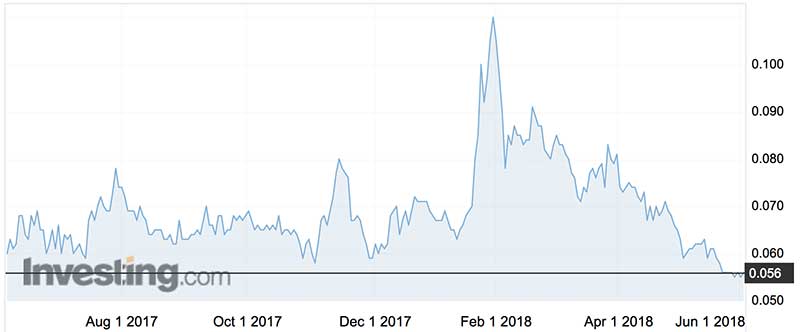Former Atlas Iron boss rides his comeback vehicle Battery Metals
Mining
Mining
“Crawl, walk, run” might not be a text-book business plan but in the case of Battery Metals, an emerging graphite producer, there are two reasons to see it as an important policy — one ancient, one modern.
The contemporary reason for welcoming a one-step-at-a-time approach is that the mining world is littered with examples of companies that bit off more than they could chew in their early years, paying a fiercely high price later when commodity prices moved against them.
The ancient reason is actually not that old but resides in the track record of Battery’s chief executive, David Flanagan.
Flanagan succeeded outrageously when driving Atlas Iron to great heights when it was an early mover in the iron ore boom, and then down the other side when the tide turned.
No-one, especially Flanagan, wants to be reminded of the share-price road travelled by Atlas, from 20c in 2005, to $4 in 2011, and back to 1c in 2017 – a ride suitable for a book titled 12-years on a roller-coaster.
Battery (ASX:BAT) is Flanagan’s comeback vehicle and he is absolutely determined not to repeat the Atlas experience which was caused by a combination of expanding too quickly, borrowing too much money, and believing the boom-time commodity-mantras of “stronger for longer” and “this time it’s different” – which it wasn’t.
Graphite, which forms the second part of a battery (the cathode) to the high-flying anode minerals such as lithium and cobalt, was an early star in mining’s hottest sector, before fading as the price slipped and supply overtook demand.
Today, graphite is returning to centre-stage thanks to the global battery boom driven by rising production of electric cars and the imminent start-up of the world’s biggest graphite mine, the Balama project in Mozambique of stockmarket darling Syrah Resources (ASX:SYR).

Flanagan’s company also has its best graphite assets in Mozambique. But that’s where the comparison with Syrah ends because he is developing a small mine, on a shoestring budget with plans to grow after profits start flowing — whereas Syrah is a perfect example of big bang theory at work.
Battery’s start-up annual production target from its first mine, Montepuez, is 45,000-to-50,000 tonnes of graphite a year. Syrah is targeting 350,000 tonnes.
Both sides of this big-v-small graphite drag race argue that they’re doing it best, with Syrah able to point to the economies of scale (bigger is cheaper) and Battery able to say small is easier to manage – hence the slogan “crawl, walk, run”.
Interestingly, it is possible that both will succeed – if the graphite price stays high due to global demand as commodity consultant Roskill believes.
“The graphite industry is only just now recovering from several years of falling demand and low prices,” Roskill reported recently. The industry had shifted into an upward price trend “underpinned by the rapid uptake of lithium-ion batteries”.
Over the next 10 years Roskill reckons consumption of graphite in batteries will grow at a remarkable 17%-to-22% a year.
A rising tide, so they say, lifts all boats and Syrah and Battery (plus a few others) are in the graphite boat, albeit with different growth ambitions.
Investors, interesting, are wary of both Syrah and Battery:
If Battery can stick to the crawl-walk-run business plan then it has the makings of a success with the targeted 45,000-to-50,000 tonnes of graphite a year from a start-up in the second quarter if next year generating around $US20 million a year in net operating cash flow, a payback period of two years on the estimated capital cost of $US42.3 million with the mine life forecast to be at least 10 years.
In mining terms that’s a sweet little project, a perfect way for Flanagan to make his return, and a reason for some critics to wonder why the stock is stuck in a rut at around 5.6c, valuing the business at an untaxing $43 million.
Perhaps one reason why the share price looks low is that Flanagan has shown signs of catching the fresh dose of the Atlas bug, talking about much grander graphite developments which include expanding Montepuez even before its built, and then developing a second mine which has the same name (Balama) as that of Syrah.
Exciting as a second chance is for Flanagan there are a few friends who hope he does not drive Battery too hard, expand too quickly, incur too much debt or issue too many shares and find that he’s riding Atlas Mark 2 because forecasters claim that this time the commodity-market will be stronger for longer (which it won’t be).
Reining in Flanagan’s understandable enthusiasm is Battery’s experienced board of directors led by seasoned mining company chairman Jeff Dowling and the incredibly well-connected Gilbert George.